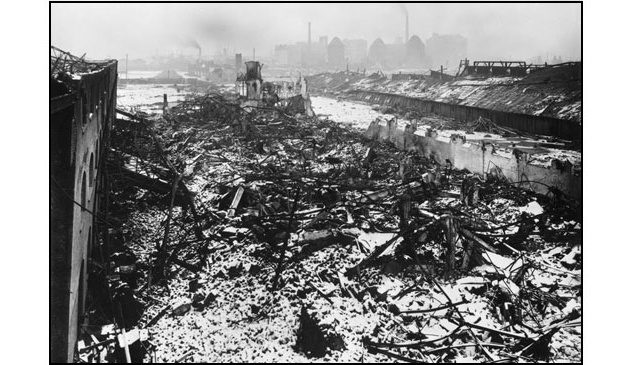In brief – Early-20th century London

County Hall, offices of the London County Council, opened in 1922 on the south side of Westminster Bridge. At that time it was unfinished, hence its lack of symmetry in this photograph. It was built on the site of the earlier Metropolitan Board of Works offices and various wharves and factories. It served as the headquarters of local London government until 1986.
The West End along Oxford Street, Regent Street and Piccadilly was transformed in the early decades of the 20th century, with the building of new hotels, restaurants and department stores. Almost all of London’s large retail stores had grown and evolved from humble beginnings, usually a single drapers’ shop. It was thus unusual when the American entrepreneur H. Gordon Selfridge opened a giant store on Oxford Street selling numerous types of goods in various departments from the outset. From the first decade of the century a second-hand fair opened at the large wholesale animal market at Caledonian Road and for the next few decades was one of the great London attractions, with over 700 stalls by the start of the Great War. There were over one hundred street markets in London in the 1930s. A new system of regulating them was introduced in 1927 and with a greater degree of organization they started to be patronized by the middle classes and not just the poorer parts of society.
At the beginning of the 20th century there was a growing movement of democrats and revolutionaries in Russia who were being ruthlessly hunted down by the Tsar’s police. Some notable members of the Marxist movement moved to London where they could meet together undisturbed to make their future plans. In 1903 the Second Congress of the Russian Social Democratic Party took place in Tottenham Court Road, organised by Vladimir Lenin.
The Metropolitan Police were generally slow to introduce new technology into their armoury. ‘Police boxes’ – blue telephone boxes used by officers to communicate with their police stations – were first created by provincial forces and began to appear in London in 1929. For the next fifty years they would become a standard fixture of every area of London. Police cars were also used in London later than other forces. Poor management led to at least a certain level of corruption amongst beat officers, including taking bribes – for example, from publicans, illegal bookmakers or prostitutes – to turn a blind eye or to make themselves available when trouble flared. Corruption within the CID was also on the increase.
Racketeering was already well-established at the beginning of the century and many businesses in London, whether legitimate, shady or illegal, were paying protection money to one or other of many gangs. A significant change to take place in criminal activity was the invention of the motor car, giving thieves something new to steal, as well as providing a fast get-away vehicle. There was a general rise in crime in London during the Second World War. To some extent it was fuelled by a demand for goods that were no longer freely available and a consequent black market. A new trade opened for stolen goods, with the ‘spiv’ as the middleman.
In 1910 a gang of revolutionary activists from Latvia attempted to break into a jeweller’s shop but police were alerted. In the ensuing shoot-out four police were shot dead but the gang escaped. Several weeks later the authorities received information that they were hiding at Sidney Street in Whitechapel and 200 police officers surrounded the house. In the ensuing siege, attended by Home Secretary Winston Churchill, the house caught alight and the gang members died.


